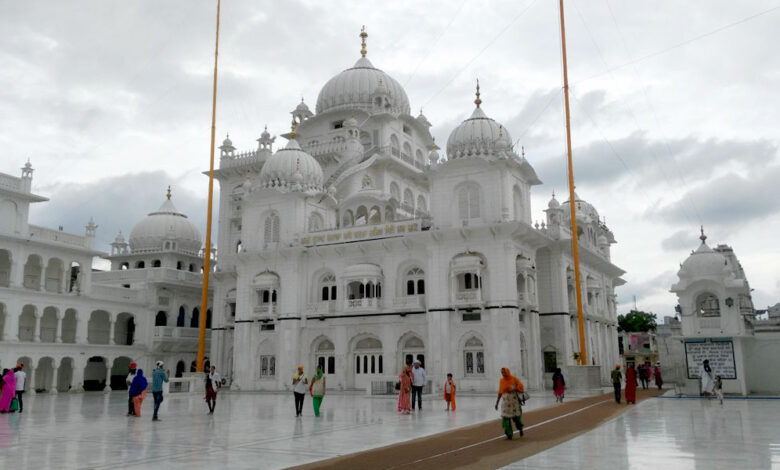Takhat Sri Patna Sahib: One of Holiest Places of Sikhism
The current shrine of Patna Sahib or Takht Sri Harmandirji Sahib was built in the 1950s.

Takhat Sri Harimandir Ji Patna Sahib also known as Patna Sahib is considered the second holiest Takhat. Revered as the birthplace of Sri Guru Gobind Singh Ji Maharaj, it is one of the five seats of temporal authority of the Sikhs and has been consecrated by three Sikh Gurus. A symbol of valour and fearlessness, the shrine inspires great piety in pilgrims and holds pride of place in the glorious heritage of Patna City.
It was built by Maharaja Ranjit Singh (1780-1839), the first Maharaja of the Sikh Empire, who also built many other Gurdwaras in the Indian subcontinent. The current shrine of Patna Sahib or Takht Sri Harmandirji Sahib was built in the 1950s. Guru Gobind Singh, the tenth Sikh Guru, was born in Patna, Bihar, on 22 December 1666.
He also spent his early years here before moving to Anandpur Sahib. Besides being the birthplace of Guru Gobind Singh, Patna was also honored by visits from Guru Nanak Dev Ji as well as Guru Tegh Bahadur Ji. Patna Sahib railway station, a railway station with same name located nearby, is connected to many metropolitan cities of India by the Howrah-Delhi Main Line.
It is believed that Guru Gobind Singh was born here at this place and had spent his early years of childhood here before moving over to Anandpur. Besides that, Guru Nanak and Guru Tegh Bahadur have also visited Patna, which makes this place sacred for the Sikhs. This Gurdwara in Patna is considered as one of the important pilgrim sites by the Sikhs. According to history Guru Nanak visited this place before proceeding to the holy place Gaya. Salis Rai Jouri’s opulant haveli is also situated at this place. Salis Rai Jouri’s a great devotee of Guru Nanak Guru Nanak’s converted his palatial home into a dharamsala for the devotees. When Guru Tegh Bahadur visited Patna, he too stayed at this place. Later,a huge mansion was built above the dharamsala of Salis Rai .
Harmandir was also called ‘Sangat’ and was held in great regard and veneration among the Sikhs in 18th century. In 1839 the place was destroyed in a fire. Maharaja Ranjit Singh, the famous Sikh king undertook the reconstruction of the Harmandir.However he did not survive to see the new structure. In 1934,a powerful earthquake had struck the state of Bihar and the tremors were felt in Patna too. As a result of which some portions of the Harmandir was destroyed again. The reconstruction was started on November 19, 1954 and was completed in about three years time.
Takhats literally means a throne or seat of authority. These are spiritual and temporal centre of Sikhism. Here is the List of Five Takhat
Sri Akal Takht Sahib
Adjacent to the Golden Temple in Amritsar, is the marble paved square facing the Darshni Deorhi. On the opposite side of the marble square stands the Akal Takht, which is regarded as the supreme
Takhat Sri Harimandir ji Patna Sahib
Patna city has has the unique distinction of being h6noured by the holy presence of the Buddha, Guru Nanak and Guru Tegh Bahadur. Besides, it is also the birthplace of Sri Guru Gobind Singh.
Takht Sri Keshgarh Sahib
The first town associated with the Sikh history is Nanakana Sahib, the birth place of Guru Nanak Sahib. But, the first town founded by Guru Nanak Sahib was Kartarpur (Pakistan).
Takht Sachkhand Sri Hazur Sahib
Nanded (pronounced Nander), formerly in Hyderabad State is now a district town in Maharashtra. It is a railway station on the Manmad-Secunderabad section of South Central
Takht Sri Damdama Sahib
Talwandi Sabo is also known as Guru Ki Kashi. Here the fifth Takht of the Sikhs is located.


